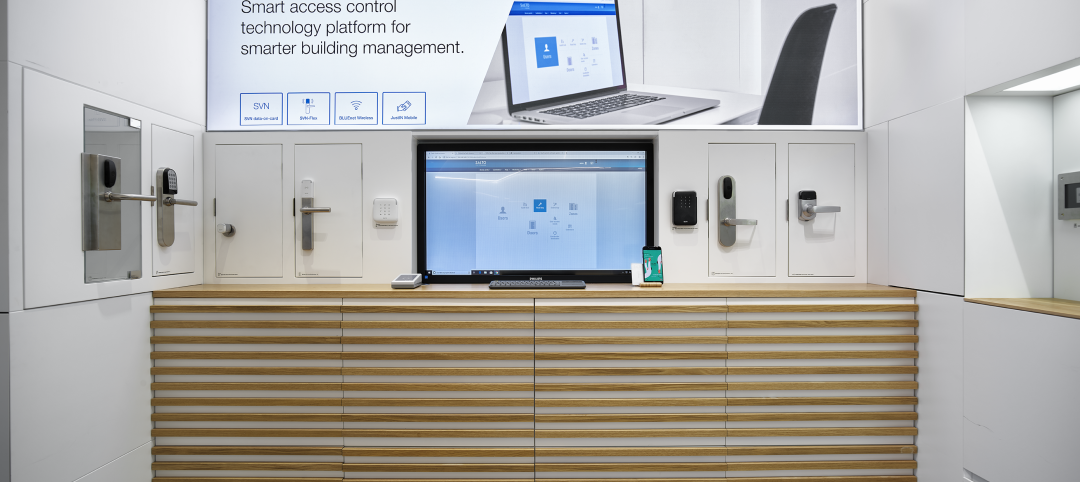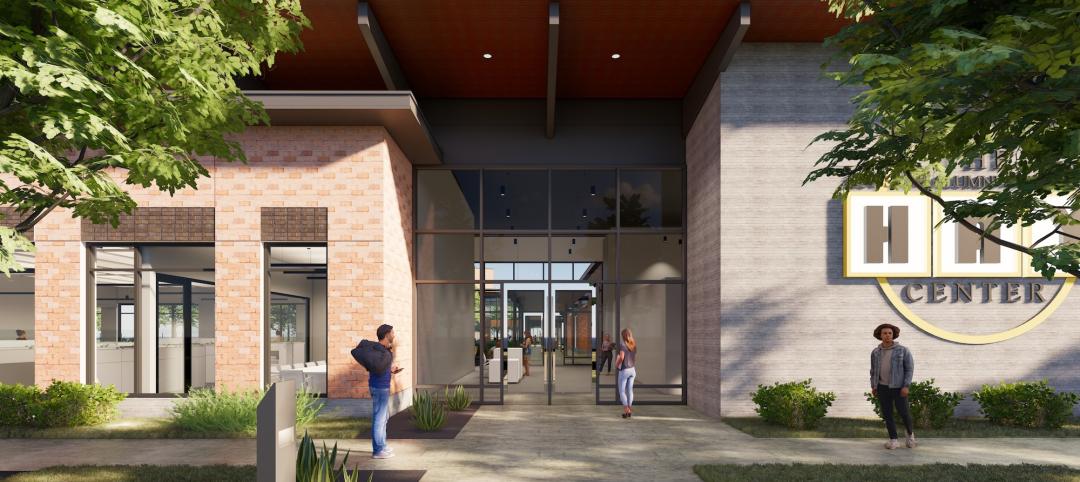Cities and suburbs all over the country face the same problem: not enough affordable housing for their own police, firefighters, EMTs, teachers, and lower-level administrative staff in schools and government agencies. C. Kat Grimsley, PhD, has a suggestion: If your school district is building a new school, build housing in the air space above it and put lower-paid public employees at the front of the line to live there, at subsidized rental rates.
Grimsley, who directs the master’s in real estate program at George Mason University, won a competition for best paper from RCLCO Real Estate Advisors for this idea. She tested her theory out using the third-largest school district in Virginia, Loudoun County, where the Area Median Income is $134,464, but where there’s a need for 10,000 affordable rental units for families.
Her scheme envisions a three-story concrete school at the base topped by a three-story wood-framed apartment building. (Such a configuration would meet most local fire codes for wood buildings.) This could yield 42 one-bedroom units (for, say, young single teachers or EMTs making almost nothing), and six each of two- and three-bedroom apartments for families, for a total of 54. The mix could be juggled depending on local needs.
There's a lot to like about this idea. First, land costs for the residential structure would go down to zero, or there could be some cost sharing with the school district. But still a bargain. The school district would already be paying to bring in utilities to the site, so that would be another savings for the apartment portion of the project. The scheme would also step around the “taking issue,” since any land that the school district acquired through eminent domain would be primarily for a public purpose (building the school), not a private one.
Parking could be shared. The school would get use of the parking lot from, say, 7 a.m. to 4 p.m. on school days; the residents could use it after 4 and at night.
Teachers could roll out of bed in the morning and take the elevator to school (there would be separate elevators and entrances for the school and residences). Police, firefighters, EMTs, and school maintenance staff could live in the same town where they work, instead of having to live in a more distant town where the housing is more reasonably priced.
Grimsley focused on using her scheme for new school construction, but the real payoff would come with using existing schools. Loudoun County, for example, has more than 90 education facilities for its 81,622 students. Building in the air rights over an active K-6 would be difficult to impossible, of course. But what about that ground-level parking lot? Could it be converted to structured parking (at school district cost) with housing above? That would be a piece of cake for any builder. School districts need to look into their real estate portfolios to see if there’s land on school properties that could be turned into housing.
Sure, Grimsley’s modest proposal needs more work, but something tells me there’s a brilliant idea here. Do you agree? Disagree? Send me your thoughts at the email below.
Related Stories
Sponsored | Multifamily Housing | Aug 15, 2023
Embracing Integrations: When Access Control Becomes Greater Than the Sum of Its Parts
Multifamily Housing | Aug 11, 2023
Hotels extend market reach with branded multifamily residences
The line separating hospitality and residential living keeps getting thinner. Multifamily developers are attracting renters and owners to their properties with hotel-like amenities and services. Post-COVID, more business travelers are building in extra days to their trips for leisure. Buildings that mix hotel rooms with for-sale or rental apartments are increasingly common.
MFPRO+ New Projects | Aug 10, 2023
Atlanta’s Old Fourth Ward gets a 21-story, 162-unit multifamily residential building
East of downtown Atlanta, a new residential building called Signal House will provide the city with 162 units ranging from one to three bedrooms. Located on the Atlanta BeltLine, a former railway corridor, the 21-story building is part of the latest phase of Ponce City Market, a onetime Sears building and now a mixed-use complex.
Senior Living Design | Aug 7, 2023
Putting 9 senior living market trends into perspective
Brad Perkins, FAIA, a veteran of more than four decades in the planning and design of senior living communities, looks at where the market is heading in the immediate future.
Multifamily Housing | Jul 31, 2023
6 multifamily housing projects win 2023 LEED Homes Awards
The 2023 LEED Homes Awards winners in the multifamily space represent green, LEED-certified buildings designed to provide clean indoor air and reduced energy consumption.
MFPRO+ New Projects | Jul 27, 2023
OMA, Beyer Blinder Belle design a pair of sculptural residential towers in Brooklyn
Eagle + West, composed of two sculptural residential towers with complementary shapes, have added 745 rental units to a post-industrial waterfront in Brooklyn, N.Y. Rising from a mixed-use podium on an expansive site, the towers include luxury penthouses on the top floors, numerous market rate rental units, and 30% of units designated for affordable housing.
Affordable Housing | Jul 27, 2023
Houston to soon have 50 new residential units for youth leaving foster care
Houston will soon have 50 new residential units for youth leaving the foster care system and entering adulthood. The Houston Alumni and Youth (HAY) Center has broken ground on its 59,000-sf campus, with completion expected by July 2024. The HAY Center is a nonprofit program of Harris County Resources for Children and Adults and for foster youth ages 14-25 transitioning to adulthood in the Houston community.
Adaptive Reuse | Jul 27, 2023
Number of U.S. adaptive reuse projects jumps to 122,000 from 77,000
The number of adaptive reuse projects in the pipeline grew to a record 122,000 in 2023 from 77,000 registered last year, according to RentCafe’s annual Adaptive Reuse Report. Of the 122,000 apartments currently undergoing conversion, 45,000 are the result of office repurposing, representing 37% of the total, followed by hotels (23% of future projects).
Multifamily Housing | Jul 25, 2023
San Francisco seeks proposals for adaptive reuse of underutilized downtown office buildings
The City of San Francisco released a Request For Interest to identify office building conversions that city officials could help expedite with zoning changes, regulatory measures, and financial incentives.
















